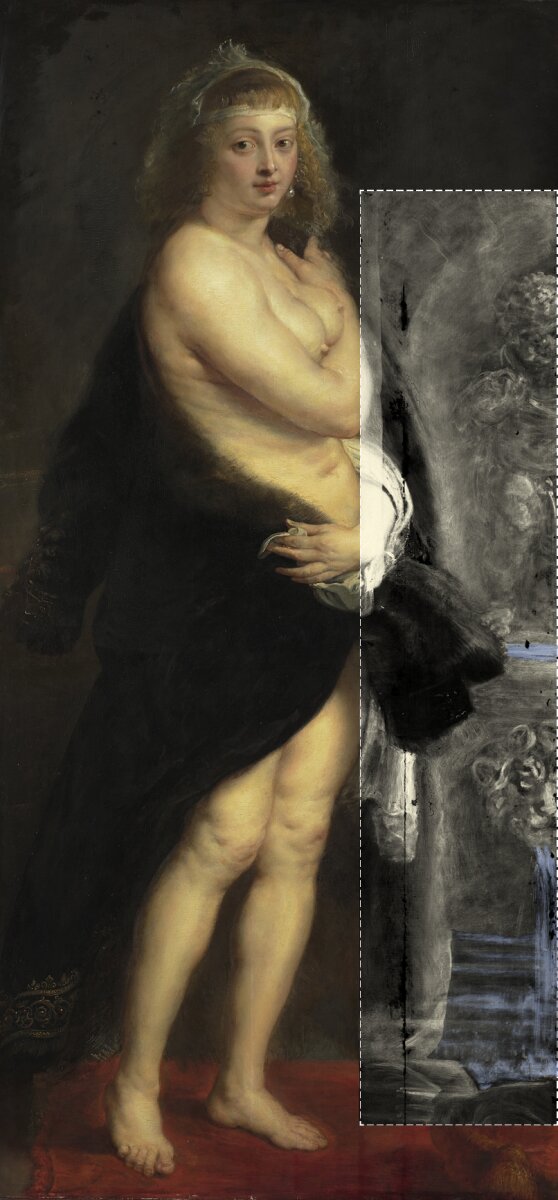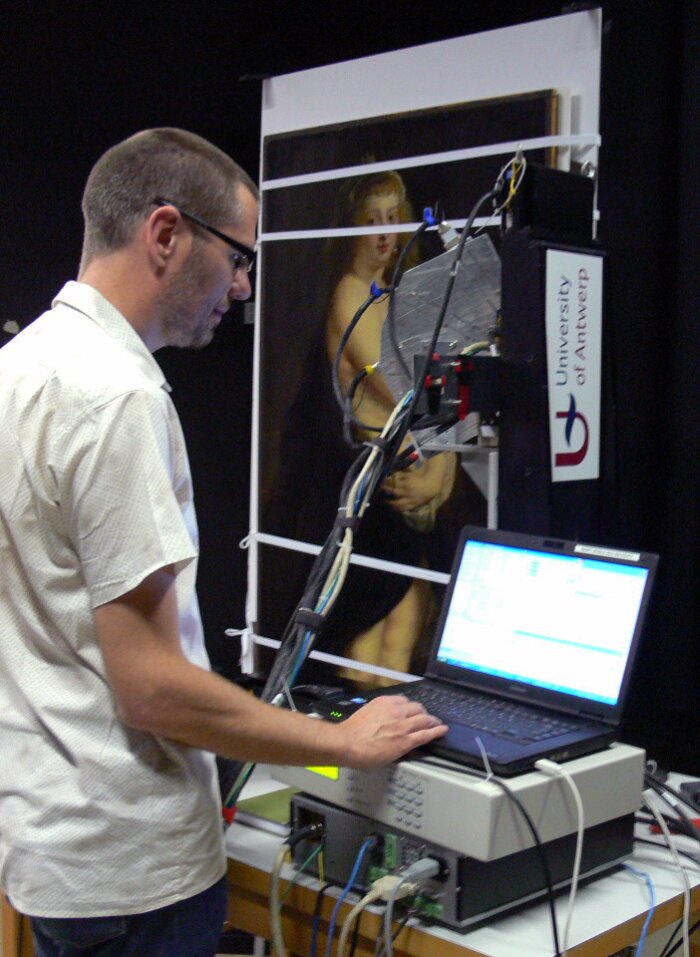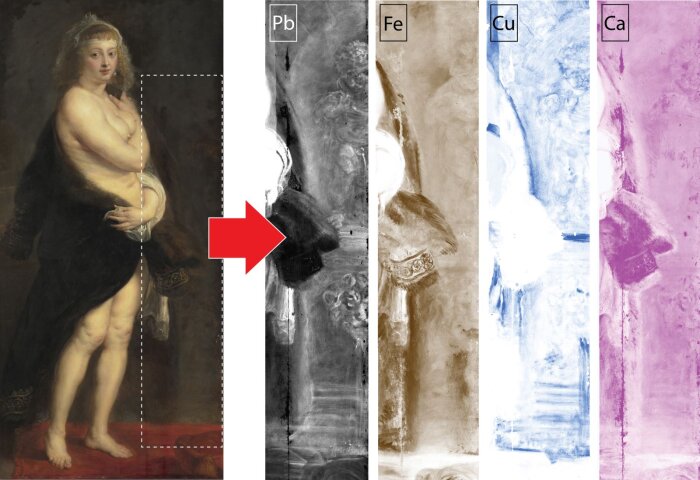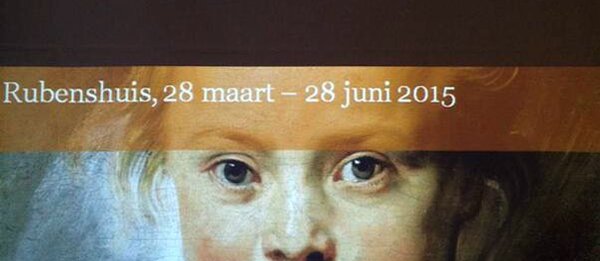'The Fur' by P.P. Rubens: MA-XRF scanning reveals a 'suggestive' fountain
Our MA-XRF scanner paid a visit to Vienna in the summer of 2014. A multidisciplinary team of scientists, art historians and conservators studied the world famous portrait of Hélène Fourment, Rubens' second wife. While the spectator beholds Hélène in front of a dark background, experiments revealed a fountain with great detail. The fontain consists of a of a peeing boy on pedestal with a water-breathing lion’s head. These hidden elements gave the portrait an explicit erotic connotation and that is most probably the reason why they were overpainted in a later stage.
This impressive portrait has captured the imagination of many because Rubens' wife is portrayed life-size, at full-length and single wrapped in a fur coat, while looking the beholder straigth in the eye. Art historians have puzzled over function and meaning of 'The Fur’ for decades. Examination with our state-of-the-art scientific technique now adds completely new information to this discussion . The measurments were requested by art historian prof. Katlijne Van der Stighelen (KUL) and she has interpreted the discovery in collaboration with Gerlinde Gruber from the Kunsthistorisches Museum. The peeing boy is a motive that is known from Antiquity and often used by Renaissance painters such as Lorenzo Lotto and Michelangelo as a metaphor for lust and sexual unification.In this way, the discovery confirms the suspicion that this was originally a bedroom piece, intended only for the eyes of Rubens and his wife.
The news of the discovery was launched during the inauguration of the Chair on Advanced Imaging Techniques for the Arts on 27th February 2015. The results of the scans were presented in the exhibition catalogue 'Rubens in private’, curated by Ben Van Beneden (Rubens house). The exhibition was on display from 28th March to 28th June 2015 in the Rubens House in Antwerp and attracted a large number of visitors.
Picture gallery
-
 Digital reconstruction
Digital reconstruction -
 The MA-XRF scanner during the experiments
The MA-XRF scanner during the experiments -
 Elemental distribution maps of 'The Fur'
Elemental distribution maps of 'The Fur'
Press area
Downloads:
- Perstekst 27 Februari 2015
- Achtergrondinformatie bij de perstekst
- Press release 27th February 2015
Press coverage:
- Full press coverage page
- De erotische kant van Rubens: dr. Geert Van der Snickt on ATV, 27/2/2015

